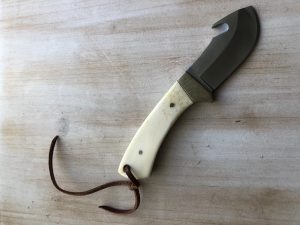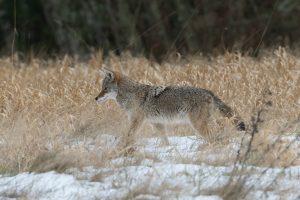 What do I do with the guts?
What do I do with the guts?
This is a very common question asked by less experienced hunters.
And a very important question indeed.
If you have been fortunate enough to be successful on your hunt, you have likely put forth considerable effort to succeed.
Well in this article, I am going to explain exactly what you need to do starting the moment you have killed your deer.
We will cover field dressing, what to do with the guts, and the timetable to consider to make sure your deer meat does not go to waste.
How long can a deer lay before gutting?
From the moment you first kill your deer, the clock starts ticking. In general, the faster you act, the better. Temperature is the key variable in determining how long you have.
Do you have to gut a deer right away?
If the weather is hot, you need to act fast. Ideally, you want to have the deer gutted within 20-30 minutes.
This is even more important if you want to eat organs like the liver.
If you happen to be hunting in a cool/cold climate, you have more wiggle room. In fact, it is not uncommon for hunters to leave gutting an animal killed on a cold evening until the next morning.
With that said, don’t push your luck. Get in there and get that deer gutted!
How Do You Gut a Deer?
The topic of how to gut a deer is big enough to warrant its own article. The best advice if it is your first time is to just get in there and do it. The only way to learn is to experience it. You will improve each time. Checkout this article on how to start hunting for more beginner tips.
Checkout this video by Steve Rinella for a quick overview.
Tools Needed:
A good knife will make the job much easier. My personal favorite is the Buck 192 Vanguard. Checkout the link for a thorough review of why I like it so much.
- Full tang construction
- 420HC blade steel for durability
- Dynaflex rubber handle
What to do with guts after field dressing?
This is another common question I have heard asked by newer hunters.
When you gut a deer, you end up with what is commonly referred to as a “gut pile”. The “gut pile” is exactly what it sounds like, the pile of guts you just pulled out of your deer.
What to do with it after you gut it? Your best bet is to return it to the woods.
And this is easiest done if you are able to gut the animal where the killed occurred. If it was near a road, have the courtesy to move the animal and the gut pile off the roadway. This is both respectful of the animal and others that happen to use the road.
Once the gut pile is left, don’t be surprise if it disappears in no time. The buzzards and coyotes will be on it within a few hours. When you come back the next day, it’s likely to have vanished.

Many hunters believe that the area where the guts are left will be poor for hunting afterwards. There is merit to this belief. There will be a whole host of unnatural scents in the area (including yours).
But all hope is not lost.
It is not uncommon for other deer to come checkout the guts and area where a deer was killed. The biggest issue is that these guts will often attract other predators like coyotes which may keep deer out of the area for a few days.
If you truly don’t want to risk the chances of disturbing your hunting area, you can put the guts in a trash bag and transport them somewhere else.
What To Do After Field Dressing
After the deer has been field dressed, your next objective is to get that deer cooled down as quickly as possible. Since you already removed the guts, which are where a lot of the heat is stored, the next thing to consider doing is to skin the deer.
Skinning a deer warrants an entire article. Checkout the video below for a great overview.
Tools Needed:
My favorite tool for skinning and finishing field dressing a deer is the Havalon Hydra. It combines both a bone saw and a razor sharp blade that is excellent for skinning. Checkout our article to learn why I think it is the best hunting bone saw.
- 3 additional Baracuta blades, one each of Fillet (#127XT), Hunter (#115XT) and Bone Saw (#115SW)
- 12 additional Piranta blades, three each of #60A, #70A, #22XT and #22
- 5-7/8” aluminum alloy handle
Another helpful tool for skinning a deer is a gambrel. A gambrel is used to hoist the deer up to make the skinning process much easier and keep the deer clean.
- Sport_type: Hunting
- Hoist and Gambrel Combo
- Perfect For Deer and Antelope
Once you have hung and skinned the deer, it is now time to either cut the deer (referred to as quartering) or bag and hang it in a cool, dry location.
Don’t leave it somewhere another predator has access to.
- Hunting Game Bag(s) - XL Game Bags are ideal for use with Elk, Caribou or deboned Moose.
- Convenient & Lightweight - 1 LB 5 OZ (XL) l LB 1.1 OZ (L) These are perfect for any backcountry adventure.
- Machine Washable - Made with 100% polyester these BlackOvis game bags are long lasting & dependable. Simply throw them in the washer using a gentle cycle after each use & enjoy year after year.
Do yourself a favor and get some good game bags. These will help allow the meat to cool off and prevent flies and other insects from contaminating the meat.
I really like the Black Ovis game bags. The material is high quality. They are reusable, so when you are done throw them in the wash and they will be ready for your next hunt. When washing, try using scent free detergent.
Washing a Deer
- LUCY’S NATURAL COMPOSITION - Lucy’s White Vinegar's reputation as a trusted product stems from its safety, effectiveness, versatility, and eco-friendliness. Made from fermented ethanol, it contains acetic acid, a naturally occurring compound. Its formulation allows it to be used around food and the home. Additionally, white vinegar is biodegradable and does not contribute to environmental pollution, offering a more sustainable cleaning option by reducing reliance from other cleaning agents.
- SPICING UP DIPPING SAUCES - Lucy’s White Vinegar can add a tangy kick to dipping sauces. Its acidity helps balance flavors and can enhance the overall taste. For instance, a splash of Lucy’s Vinegar can brighten up a mayonnaise-based dip or give a zesty edge to a mustard sauce.
- SUBSTITUTE FOR SALT OR BUTTERMILK - Lucy’s White Vinegar can be a useful alternative when you’re out of salt or buttermilk. For example, you can use vinegar to add acidity to dishes in place of salt or mix it with milk to create a buttermilk substitute for baking.
In this section I will talk about whether to wash a deer or not.
Whether you are cleaning elk or deer meat, this is an important step.
If you happen to shoot the deer in the guts or puncture the bladder when gutting, you may need to consider washing the affected area to clean it.
Washing the meat increases the risk of bacterial growth and contamination so if you do wash with water, be sure to dry the areas afterward.
You should wipe the skinned deer down with white vinegar after washing or anytime you want to clean the deer. The vinegar will help kill bacterial and prevent the meat from becoming contaminated or spoiling.
How Long Will a Field Dressed Deer Keep?
Once you have made it through all of the above, your final goal is to preserve the meat.
This basically means keeping the meat cool.
If you are out in the field, make sure to have a cooler with ice handy. When the meat is in the cooler, try to prevent it from getting too wet and from directly touching dry ice if you use that.
The other option is to let the deer hang in a cool, dark, dry place like a shed or meat locker. If kept cool (under 45°F), you can leave the deer like this for a few days. Some hunters hang their deer for up to a week.
Once you have had time to process the meat, the best way to preserve it is to use a vacuum sealer.
Frequently Asked Questions
How long do you have to gut a deer?
It is always best to try to gut the deer immediately after the animal is killed. Is deer meat still good overnight? If the temperatures are low enough (<50°F) then waiting longer can be okay.
What to do with the gut pile afterwards?
The easiest thing to do is leave them when the animal is killed. Just make sure to leave them in an area that isn’t disrespectful to the animal or other hunters.
Will gut piles spook deer?
A common debate among hunters is whether or not a gut pile in an area will spook deer and prevent them from migrating there.
The argument is that since a deer was killed in the area, other deer will avoid that area in the future. There is merit to this argument, but the effect is usually short lived.
There are 2 reasons deer may avoid the area in the short term (a few days).
- Human scent left behind by hunters.
- The gut pile attracts coyotes to the area which result in deer avoiding the area.
Will deer eat gut piles?
While it certainly is possible, deer generally do not eat the gut pile from another deer. It is common for them to come sniff the gut pile, maybe even lick some of the blood, but they do not usually consume any of the guts.
Should I wash the deer afterwards?
In generally, not unless it is absolutely necessary. Washing a deer increases the chances of it spoiling. For advice, see the section above on washing.
What should I do with the skull?
Well that is up to you. You can save the antlers and mount them or do something more fancy like a European mount. If your interested, checkout my article on bleaching skulls for a step by step breakdown of how to do one yourself. Be sure to also look at our article on what to add to the water when boiling the skull as well.




